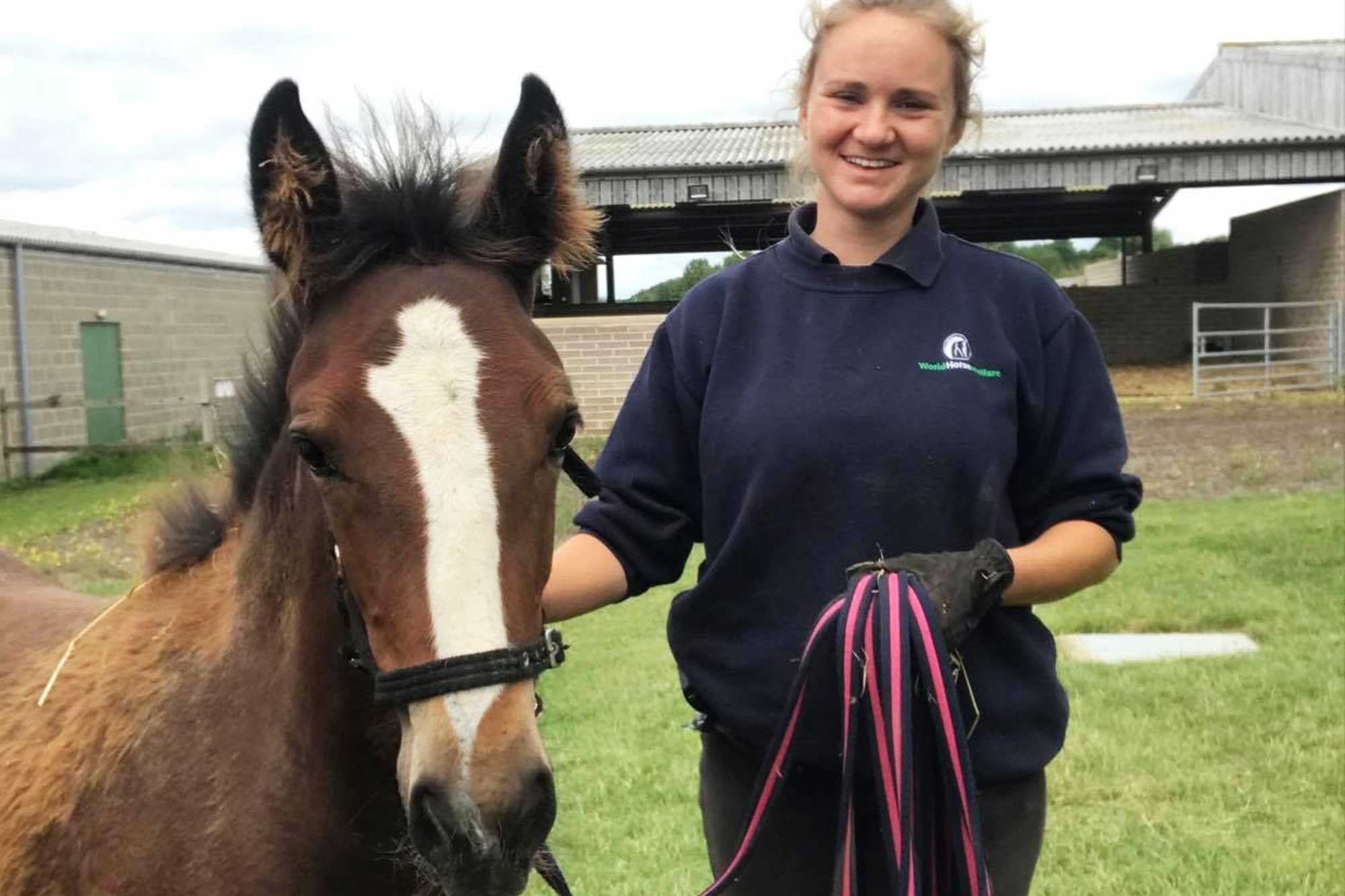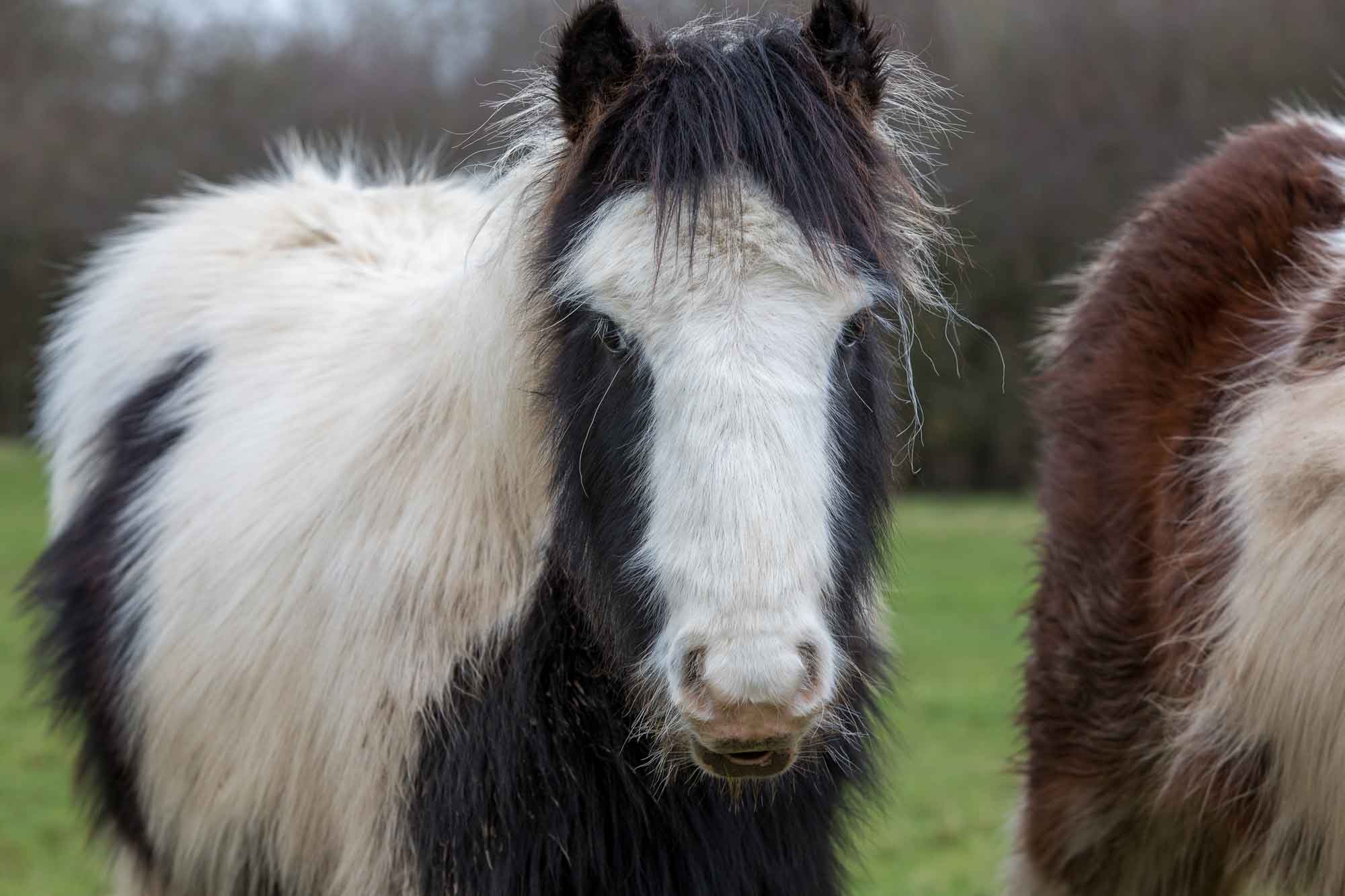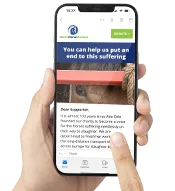The rescue of 70 unhandled Icelandic horses
We catch up with Deputy Chief Field Officer Jon, to find out why rescues like this are lifesaving.
Posted on 13/11/2025

This year, our charity helped rescue and take in one of the largest groups of rare breed horses in our history. It followed a mammoth team effort that was led by our Deputy Chief Field Officer Jon Phipps, with support from our key partners in the South West – The RSPCA and The Mare and Foal Sanctuary. And over a period of 15 months, we rescued a total 70 Icelandic horses from multiple sites in Devon.
We first heard about the group in May 2024 when members of the public raised concerns about a number of semi-feral herds of Icelandic horses. We discovered fields of pregnant mares with foals at foot living alongside colts and stallions with insufficient space for all the horses to safely express normal behaviours. Years of uncontrolled breeding had led to this highly pressured environment with ponies incurring life threatening injuries as a result of infighting for resources.
We had grave concerns for their welfare, and without rapid intervention, this already unstable situation was in danger of spiralling totally out of control.
We worked hard to safeguard the wellbeing of the horses and drew up a plan to bring the situation back under control. Working with the owner and with veterinary advice, we assisted in reducing the number of horses but, due to the sheer scale of the situation, we had to do this in stages. With the vet’s help, we first identified and removed the sick, injured and vulnerable horses who were most at risk. These were followed by mares and foals in need of specialist care and then the stallions. The healthy mares and foals were taken last. By the end of this summer, all of horses had been safely removed with 40 coming into our farms.
The horses we have taken into our care are settling into life at our rescue and rehoming centres as they look towards brighter futures. Having arrived relatively unhandled, we have been very impressed by the way they have taken to the rehabilitation process on our farms. Their resilience, friendliness and ability to learn quickly is a real testament to the Icelandic breed.
Any of the Icelandic horses in our care who are ready for rehoming will be listed on our rehoming pages in due course. We are unable to estimate when any of the Icelandics at our farms may be ready for rehoming or to keep a waiting list of interested rehomers, so please continue to check the website regularly if interested – it’s updated weekly, usually on a Wednesday afternoon.
Here, we catch up with our Deputy Chief Field Officer, Jon Phipps, who was pivotal in making this rescue happen, to find out just why rescues like this are lifesaving.
As the last of the Icelandic horses headed to the various rescue centres that would be their homes for the coming months, the overriding feeling was one of sheer relief.
But not just for us.
When you have situations like this, with large numbers of unhandled horses and uncontrolled breeding, all within the confines of relatively small paddocks, the lives of the horses can be utterly miserable.
For the stallions, they are forced to be hyper-vigilant to constantly be able to protect ‘their’ mares in their harems from other stallions, who may try to take them away. They are forced to constantly patrol and to drive away other males that come too close or that they see as a threat. This is entirely natural behaviour for stallions but in the wild, this would play out over vast distances and terrains where groups can keep safe distances from each other. When you have this many stallions in such relatively small areas, the threats are constant. Fighting can be fairly relentless, especially in spring and summer when the mares are in season, and fight wounds are common, some of them severe.

For the mares, life in such close quarters is exhausting. It’s natural for mares to come back into season soon after foaling, and in a more natural environment, the herd structure and space would allow for dispersal and rest. But in these restricted paddocks, the lack of space means mares are repeatedly covered with no opportunity for separation or relief. There is nowhere for the youngsters to disperse when weaned, so inbreeding is rife. The population grows, competition for resources becomes more intense, as does the dangers of disease. The mares can be caught up in the fighting of the stallions and may be forced to defend their foals from other rival stallions who may pose a danger to them.
But I think those that get the worst of it are the little colts. These yearlings and two-year-old males are often accepted by the mature stallions when they are foals, but as soon as they start to get anywhere near sexual maturity, all bets are off, and they become seen as a threat and therefore a target. In the wild, these youngsters would soon get the message and disperse, finding other similar horses to themselves and eventually forming their own herds or joining others.

On my first visit to these horses in May 2024, I saw a yearling colt isolated at the bottom of the paddock and clearly terrified. He was trying everything he could not to be noticed, trying to hide in the bushes, the whites of his eyes showing and his breathing fast and shallow. As I watched, a large stallion left his herd and ran down the paddock and smashed into him, causing the colt to scramble into the hedge to try to escape. We managed to get him to safety, but it was a scene being repeated all over the paddocks. There was no respite for these little colts, and they spent their entire lives in utter fear, often separating themselves off from the herd, trying to hide or appear invisible. They literally risked their lives trying to get to the water troughs in case one of the stallions took offence at it. Some did manage to escape by climbing over hedges and banks in an attempt to save themselves and ended up running loose in neighbouring fields.
And these horses were miserable in other ways. Having that many horses in such close proximity with no parasite control or paddock management meant that the worm burdens in the soil, and therefore the horses, grew and grew over the years. In the wild, with vast distances to roam and graze in, this isn’t so much of an acute issue, but here the tests showed the roundworm and redworm counts were off the scale. Young horses are especially susceptible to the effects of these burdens, and some became very sick and others sadly died as a result of the intestinal damage they had suffered.
For me, the most rewarding part of this entire job, and similar jobs to this that we have encountered over the years, is sensing the absolute sense of relief when we start to get control, primarily by removing the stallions. When they went and the fighting and chasing stopped, an eerie quiet fell over the paddocks.
I swear you could hear the horses that remained, breathe a huge sigh of relief.

In this case, we worked together with The Mare and Foal Sanctuary, the RSPCA, The Donkey Sanctuary, Redwings Horse Sanctuary and the Blue Cross to secure their futures. Thanks to exceptional collaborations like this, we are able to make a real difference to horses in need.
Are you or someone you know in a difficult situation which is affecting a horse’s care? We’re here to help and may be able to offer some guidance and support. Find out more about our Help for Horse Owners support service.
Please note that any of the Icelandic horses in our care who are ready for rehoming will be listed on our rehoming pages in due course. We are unable to estimate when any of the Icelandics at our farms may be ready for rehoming or to keep a waiting list of interested rehomers, so please continue to check the website regularly if interested – it’s updated weekly, usually on a Wednesday afternoon.

Topics
Related Blog Posts

Buena’s story – how our foals are cared for from birth to rehoming
Senior Groom Steph introduces lovely filly Buena and explains how the team care for foals from birth right through to finding them a loving home for youngster handling.

Behind the scenes: the first few months as a World Horse Field Officer
Find out what really goes on behind the scenes as a World Horse Welfare Field Officer.
Recommended News Articles

Hold on to your… hats? The Hunks and Horses are back!
One of the most popular equine calendars is back with a storm – all in the name of charity.

Improved lives for horses – and their owners – in Haiti
End of international project in Haiti sees legacy which will continue to improve the lives of rural Haitians and their equids.

West Sussex man banned for life from keeping horses
A West Sussex man who neglected horses in his care has received a three month suspended jail term and been banned for life from keeping equines.
Enjoy reading stories like this?
Join over 65,000 other horse lovers and sign up for our email newsletter

Join over 65,000 other horse lovers and sign up for our email newsletter
Sign me up now